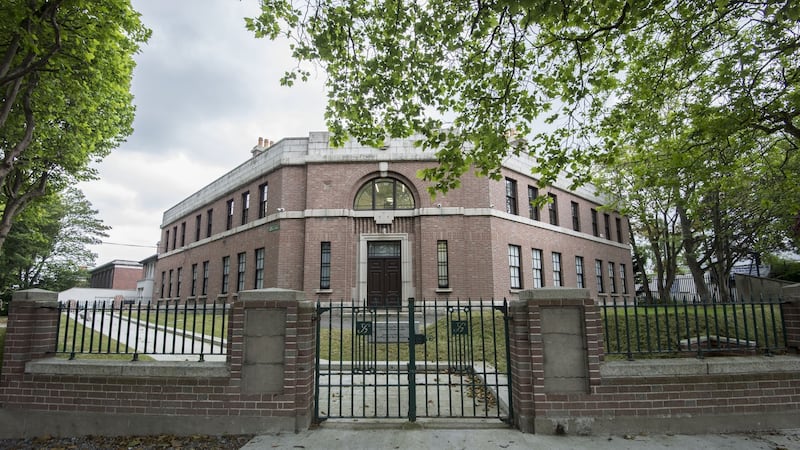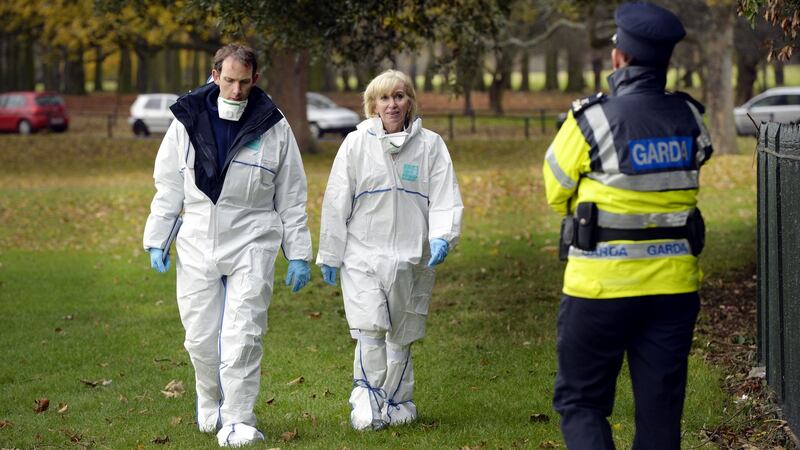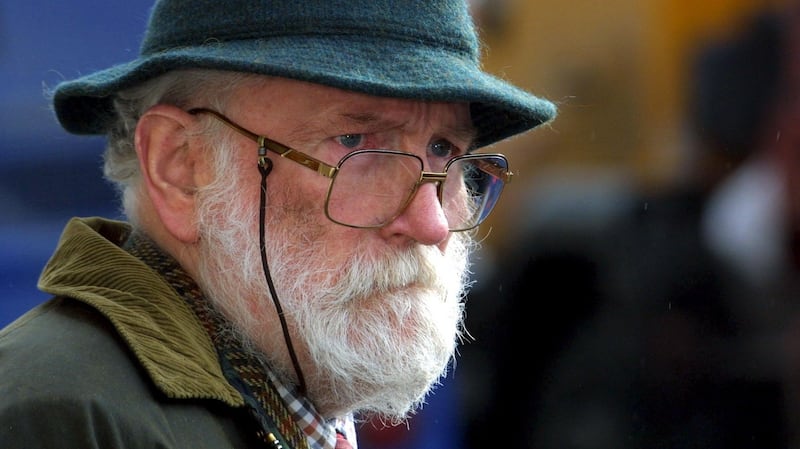Dr Linda Mulligan does not seem like the type of person who performs autopsies for a living. She's warm, friendly too.
When asked what attracted her to the job, she says that she likes “puzzles”.
“I like the whole process of the examination from start to finish – finding all the tiny bits of evidence and putting them together,” she explains.
During her time in medical school she was unusual among her classmates because she preferred to work with the dead rather than the living; to solve crimes instead of diagnosing diseases.
A child of the 1980s, her interest had built up on the back of watching episodes of the Glaswegian detective series Taggart and its more cerebral Oxford-based counterpart, Inspector Morse.
Mulligan was also influenced by Dr John Harbison, who for many years was Ireland's only State pathologist. For decades, Harbison's arrival at a crime scene, dressed in a tweed suit and deerstalker hat, was a regular feature of the evening news.
“He was almost an institution,” she recalls. “The work he did, for one man covering the whole country, was incredible.” Nearing the end of his career in the early 2000s, Harbison was examining 200 bodies a year.
Now the work is shared between four doctors, including Mulligan and the current State Pathologist Marie Cassidy. As Mulligan speaks, Cassidy, who herself has become a strange sort of TV celebrity, works away at her desk in the adjoining office.
Every year about 30,000 people die in Ireland. In the majority of cases the cause of death is clear and the most that is needed is confirmation by the coroner before a funeral can take place. But in a tiny proportion, between 200 and 300, the death is judged to be suspicious.
Local coroners
This is where Mulligan and her colleagues come in. The process begins with one of the country’s 39 local coroners calling in the State Pathologist to decide if a death looks like it may have taken place at the hands of another.
Firstly, a decision will be made on whether a pathologist should go to the scene, or if they should wait for the body to be brought to the State Pathology Laboratory for an autopsy.
“In a lot of cases it might not be necessary to attend the scene or it might not be logistically possible. But valuable evidence can be gathered from the scene. If blunt force trauma is involved it can be very, very useful to see potential causes of the injuries,” says Mulligan.
Getting to the scene is not always a simple task. In a recent case where remains were found in an isolated, mountainous area, the pathology team had to use a drone equipped with a camera to examine the scene.
“It means I didn’t have to tramp through the mountains and go through a swamp. Technology like that can be very, very good when it’s applied properly.”
Other forms of technology have proven equally useful: 360-degree cameras can create a complete 3D view of the crime scene, enabling investigators to determine the direction and spread of blood splatters, for example, and more.
Until last year the bodies of those who died in suspicious circumstances in Dublin were brought to a small cluster of prefabricated buildings on the grounds of the Dublin Fire Brigade Training Centre in Marino. The laboratory has since moved into more permanent surroundings – a converted Garda Station in Whitehall.
The new facility is pleasant, almost too much so given the work carried out daily within. The building’s art deco facade and interiors, complete with brass banisters and beautiful tile work, are a strange contrast to the sterile, stainless steel surfaces of the postmortem rooms.
By the side the building, there is a door that is bigger than the others. This is where the bodies are brought, before they are wheeled into a refrigerated room.
Detective series
The refrigerated room looks exactly as they do in detective series. The bodies are kept on sliding slabs in horizontal fridges. A freezer stands in the corner that holds still unidentified remains, often for a long time. There is usually about one body in there at any one time, Mulligan says.
Some fridges are bigger than others. Some of them are highly-expensive bariatric fridges used to store the bodies of obese people, or the contorted remains of those killed in fires.
When The Irish Times visited there were no suspicious death cases in the building; a rarity during a year that has seen the bloody Hutch/Kinahan gangland feud, which has claimed 12 lives to date, continue.
“We’ve been extremely quiet,” Mulligan says, before adding with a smile, “I suppose that’s a good thing for the general population.”
Most examinations take less than a week. Later, the remains are handed over to the family. However, the handover can take longer if a suspect is in custody as they are entitled to ask for a second post-mortem to be carried out.
“It’s very different to the UK. In the UK bodies can be kept for weeks. Here it’s a lot quicker,” she says.

The formal identification of a victim by the family is one of the more difficult parts of the job, but the new home in Whitehall for the State Pathologist has made things slightly easier. No longer does a family member have to walk into a cold room full of fridges to identify their loved one.
Instead they look through a curtained window into a specially-built viewing room which contains the body. Before the family comes in the technicians do their best to make the deceased presentable.
The technicians, properly known as anatomical pathology technicians or APTs, take the lead in dealing with families.
“They’re the guys on the frontline with the families in terms of dealing with grief. They’re very important,” says Mulligan.
Inquest
The families get to talk to Mulligan and her colleagues face-to-face at the inquest. Time is put aside to try to answer every question a relative might have about their loved one’s death. Sometimes not every question can be answered, but every effort is made.
“Death investigation in Ireland is something that, unless you have personal experience, nobody really knows anything about it. I think it’s important that communication with the people is very open on these types of issue.”

Adjoining the cold room and viewing gallery are the postmortem rooms. Mulligan insists on going in first to make sure the rooms are “clean”, as she puts it. She means that she wants to make sure that there are no corpses present. On the right is the room for non-suspicious deaths. Two metal slabs stand in the middle; the floor slopes down slightly to a drain.
On the left is the suspicious deaths’ examination room. This contains one table. There is logic behind having this as a separate room. What happens in here is liable to be picked over by defence lawyers looking for signs of contamination which could affect the results of an autopsy. Therefore it has to be kept forensically clean.
It is also bigger. During an autopsy it will accommodate pathologists, Garda photographers and technical examiners. Investigating detectives will take their places in a separate viewing room, looking down on the work below. A tough place for an inexperienced garda, I suggest.
“They’re all very professional; they’re all extremely good at what they do. It’s a clinical process, it’s scientific. It can be traumatising sometimes but most of the time we’re all job-focused,” Mulligan says.
Everything is meticulously photographed and documented. It's just like you see on TV
“It’s the same when you’re a doctor. You have to maintain the clinical detachment. You have to go in there, collect the evidence, get a cause of death and maybe help the family get some answers.”
First case
There was one autopsy, she recalls, where the Garda photographer did not tell anyone that it was his first case.
“He had to leave for a bit of air at one point. Now I always ask someone if it is their first case,” says Mulligan.
This is where suspicious deaths from Dublin and Wicklow are handled. For deaths in other parts of the country the pathologists usually have to travel to the local hospital to conduct the postmortem there. For this reason, one of them is always on call.
The examination itself takes place in a highly regulated sequence. First the pathologists collect trace evidence from the body and clothes.
Swabs are then taken from the oral cavity and intimate areas. “Everything is meticulously photographed and documented as we proceed through the examination. It’s just like you see on TV.”
Next is an external examination to checks for injuries and marks. Mulligan says at this stage it is vital not to make assumptions even if the cause of death seems to be obvious, for example a gunshot wound.
“At the end of the day we are doctors and these are our patients. You have to examine the patient thoroughly, to make sure there were no other medical conditions that could have been a factor.
There are other reasons for being thorough. “If someone comes in with a gunshot wound and we find a cancer or a tumour, that may have implications for the family. Something like that can be very, very important. That’s why we do everything routinely in every case. To make sure we don’t miss anything.”

Next is the internal exam. The pathologist will check for signs of natural disease which may have contributed to death before taking blood and urine samples which are checked for traces of drugs and poisons.
Lastly the organs are dissected and tiny pieces are put onto slides for microscopic analysis in a laboratory on-site. Through this, the investigators can detect other more subtle factors which may have contributed to death, such as scarring on the heart.
Forensic radiology
Technology has improved many aspects of the postmortem exam. New testing techniques means results are produced faster and the growing field of forensic radiology, essentially the study of the X-rays of dead people, is making it easier to analyse bone damage.
The State Pathology Laboratory will soon be able to consult with a forensic radiologist in the Mater hospital using a video link-up in their conference room, Mulligan says.
“It’s very useful to look for ballistics. But they can also be useful to look for fractures and other injuries we might not see at postmortem examination.”
But the autopsy itself has changed little over the years, she says. “I don’t think it will change and I don’t think it should change. It’s vital to see both inside and outside the body to come to a finding.”
Mulligan is unusual in that she is only the person, aside from John Harbison, to have trained as a forensic pathologist in Ireland. Everyone else had to come from abroad or travel abroad to train. Marie Cassidy is from Scotland.
I often think we wouldn't be in this job if we didn't have the clinical detachment
As Ireland has no domestic training regime in the field, Mulligan had to complete two diplomas through UK colleges while learning on the job in the lab. She is hopeful that future recruits will not find it so difficult to get into the field.
“The process for setting up a domestic training course is almost complete. So hopefully soon we will have a training post here.”
Mulligan has a clear love for the job, despite its sometimes distressing nature. Asked about its downsides, her answer is surprising bland.
“The interdepartmental communications can be daunting. When we come out of an autopsy examination everybody is looking for answers but we might not necessarily be able to give them until our investigations are back. I get very disappointed that we can’t help more immediately.
“I know the general public think it’s going to be all the horrors we see and all that, but I often think we wouldn’t be in this job if we didn’t have the clinical detachment to deal with that.
“Certain cases will affect you more than others,” she adds. “But that’s human nature. If some cases aren’t going to affect you then maybe you shouldn’t be in the job.”








